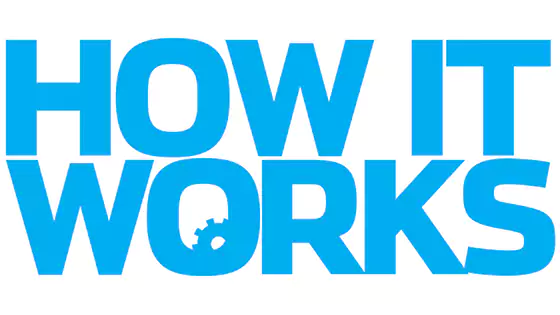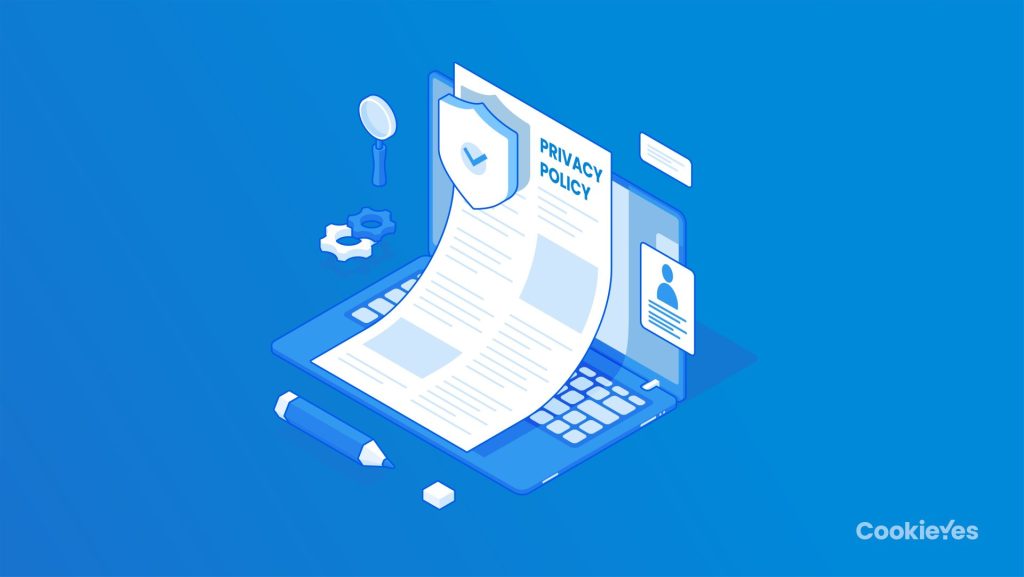Understanding how something works can be fascinating and enlightening. It helps us appreciate the mechanics behind everyday processes.
In this blog post, we will explore the ins and outs of how things work. Whether it’s a gadget, a system, or a natural phenomenon, knowing the details can deepen your understanding and spark curiosity. This knowledge can also be practical, helping you use and maintain things better.
So, let’s dive into the workings of various things. It’s going to be an interesting journey into the world of functionality and design. Get ready to discover the mechanisms that make our world tick.
Introduction To Success
Success is a journey that everyone seeks to understand and achieve. It is a concept that varies from person to person. Understanding what success means to you is the first step in this journey. In this section, we will explore the fundamentals of success.
Defining Success
Success means different things to different people. For some, it may be career growth. Others might see it as personal happiness or financial stability. It is essential to know your definition of success. This clarity guides your efforts and decisions.
Importance Of Success
Success provides motivation and purpose. It gives you a reason to strive and improve. Achieving success boosts confidence and self-worth. It also sets a positive example for others. It is vital to recognize and celebrate your successes, no matter how small.

Credit: aaagnostica.org
Setting Clear Goals
Setting clear goals helps focus efforts and resources effectively. It provides direction and motivation to achieve desired outcomes. By defining specific objectives, it becomes easier to track progress and make necessary adjustments.
Setting clear goals is a fundamental part of achieving success in any endeavor. Whether you’re aiming for personal growth, professional achievements, or improving a skill, defining your objectives is essential. Goals give you direction, motivate you to push forward, and provide a benchmark to measure your progress.Short-term Goals
Short-term goals are the stepping stones towards your bigger dreams. They are achievable within a short period, usually ranging from a day to a few months. Think about what you can accomplish within that timeframe to bring you closer to your ultimate objective. Start by jotting down specific tasks or milestones. Maybe it’s finishing a book this month or mastering a new software by the end of the week. These goals should be clear and manageable, giving you a sense of accomplishment as you check them off your list. Having short-term goals keeps you focused and prevents you from feeling overwhelmed. You can celebrate these small victories, which boosts your confidence and keeps you motivated. What’s one small thing you can achieve today that will move you forward?Long-term Goals
Long-term goals are your vision for the future. These are the big dreams that take time and effort to reach, often spanning years. They are your guiding star, giving you something to strive for over the long haul. When setting long-term goals, think about where you want to be in five or ten years. Do you aspire to run your own business or become fluent in another language? These goals require commitment and a plan to stay on track. Breaking down long-term goals into smaller, actionable steps can make them less daunting. What resources do you need? What skills must you develop? Reflect on these questions and create a roadmap to your destination. Setting clear goals, both short-term and long-term, is a powerful way to take control of your future. What are the goals that will transform your life?Developing A Strong Mindset
Developing a strong mindset is crucial for personal growth. It involves cultivating positive habits, thoughts, and actions. A strong mindset helps you face challenges with confidence and determination. This journey begins with embracing positive thinking and building resilience.
Positive Thinking
Positive thinking involves focusing on the good in any situation. It’s about seeing the glass half full. Positive thinkers believe in their abilities. They expect good results and stay hopeful. This mindset leads to better stress management and improved health.
Start by recognizing negative thoughts. Replace them with positive affirmations. For instance, instead of saying “I can’t do this,” say “I will try my best.” This simple shift can make a big difference. Surround yourself with positive people. Their energy can uplift and inspire you.
Resilience And Perseverance
Resilience is the ability to bounce back from setbacks. It helps you stay strong during tough times. Perseverance is about not giving up, no matter what. Together, these qualities form the foundation of a strong mindset.
To build resilience, learn from your failures. Each setback is a lesson. Focus on what you can control. Take small steps towards your goals. Celebrate your progress, no matter how small. Stay patient and keep going. Remember, persistence pays off in the end.
Building Effective Habits
Creating effective habits involves setting clear goals and practicing them daily. Consistency and patience are key to making new behaviors stick.
Building effective habits is vital for personal and professional growth. It involves creating patterns that lead to success and fulfillment. By understanding how habits form, you can shape better ones. This process requires consistency, patience, and a clear understanding of your goals. Let’s explore how daily routines and time management contribute to building effective habits.Daily Routines
Daily routines form the backbone of effective habits. They provide structure and predictability. A consistent routine helps you focus on important tasks. Start by listing activities that need attention each day. Prioritize these tasks based on urgency and importance. Break larger tasks into smaller, manageable steps. This makes them less overwhelming. Morning routines can set the tone for the day. Begin with simple actions like making your bed. Incorporate activities that boost energy and motivation. Exercise, meditation, or reading can be great choices. Evening routines help wind down and prepare for restful sleep. Reflect on the day’s achievements to enhance productivity.Time Management
Effective time management is crucial for building habits. It ensures you allocate time wisely to different activities. Start by identifying time wasters in your day. Social media and unnecessary meetings often consume time. Limit these activities to increase productivity. Use tools like calendars and planners to organize tasks. Schedule tasks based on priority and deadlines. Allocate specific time slots for focused work. Avoid multitasking, as it reduces efficiency. Instead, concentrate on one task at a time. Set clear goals with deadlines to maintain motivation. Short-term goals lead to quick wins. Long-term goals require sustained effort. Regularly review progress to ensure you’re on track. Adjust strategies if needed to meet objectives.Harnessing The Power Of Learning
Learning empowers growth and adaptability. It is essential in today’s fast-changing world. Understanding how learning works can unlock potential. It helps navigate challenges with ease. This section explores continuous education and learning from failures. Both are crucial for personal and professional development.
Continuous Education
Education never stops. It is a lifelong journey. New skills and knowledge keep us relevant. They help us adapt to change. Continuous education involves seeking new information. It means challenging outdated beliefs. This approach leads to innovation and creativity. It opens doors to new opportunities.
Learning From Failures
Failures are valuable lessons. They teach resilience and perseverance. Every setback offers insight. It reveals areas for improvement. Embracing mistakes fosters growth. It encourages reflection and adaptation. Learning from failures builds character. It strengthens problem-solving abilities.

Credit: toledoaameetings.com
Networking And Relationships
Building strong networks involves genuine interaction and mutual support. Relationships grow through shared experiences and trust. Effective networking requires active listening and open communication.
Networking and relationships are the backbone of professional success. Building meaningful connections can open doors to new opportunities and collaborations. Whether you’re a budding entrepreneur or a seasoned professional, understanding how to nurture these relationships is crucial.Professional Networks
Professional networks are more than just a collection of business cards. They are living ecosystems where ideas and opportunities flow freely. Joining industry-related groups or attending conferences can give you access to a wealth of knowledge and potential partnerships. Engage actively in these networks. Ask questions, share insights, and offer help when possible. These actions can help you become a valuable member of your professional community. Think about the last event you attended. Did you make meaningful connections or just exchange pleasantries? The depth of your interactions can significantly impact your career trajectory.Mentorship
Mentorship is a powerful tool in personal and professional growth. Finding a mentor can provide guidance, support, and a fresh perspective on your career path. Look for someone whose career you admire and who is willing to share their journey with you. A good mentor-mentee relationship is mutually beneficial. While you gain knowledge and insights, mentors often find fulfillment and fresh ideas from their mentees. This exchange can lead to unexpected opportunities and growth for both parties. Reflect on the mentors in your life. Have they helped you see things differently or guided you through challenging times? Consider reaching out to them with gratitude or exploring how you can mentor someone else.Leveraging Technology
Leveraging technology transforms how we interact with the world. It enhances our daily tasks, making them more efficient and accessible. From simplifying communication to optimizing workflows, technology serves as a powerful ally. Understanding its impact is crucial in today’s fast-paced environment. Let’s explore how productivity tools and staying updated can make a difference.
Productivity Tools
Productivity tools streamline tasks and boost efficiency. They help organize work and manage time effectively. Tools like digital calendars and task managers keep schedules on track. They ensure deadlines are met without stress. Collaboration apps enable team communication, regardless of location. Sharing files and ideas becomes seamless and quick. These tools save time and reduce effort, allowing focus on important goals.
Staying Updated
Staying updated is vital in a tech-driven world. Technology evolves rapidly, bringing new trends and tools. Following industry news helps adapt to changes smoothly. Subscribing to newsletters or podcasts provides insights on latest developments. Social media platforms offer real-time updates from experts. Engaging in webinars fosters learning and growth. Staying informed ensures readiness for upcoming shifts and opportunities.
Maintaining Work-life Balance
Maintaining work-life balance is a goal many strive for but often find elusive. You juggle responsibilities at work, home, and personal interests, sometimes feeling like you’re dropping the ball. Yet, finding that harmony is crucial for your well-being and happiness. Let’s explore how to achieve it with practical strategies that fit into your busy life.
Stress Management
Understanding how stress impacts your life is the first step. It’s not just about feeling overwhelmed; it can affect your health and relationships. Think about how you manage stress today. Are you reacting or proactively handling it?
Consider simple techniques like breathing exercises or short walks during breaks. These can reset your mind and bring calm. Another tip is to set boundaries. When you’re off work, really be off work. Leave your work phone alone.
Try using a planner or digital tool to schedule downtime. Seeing it written down makes it real and important. Remember, stress management is not a luxury; it’s a necessity. What small change can you make today to manage stress better?
Prioritizing Health
Your health should be at the forefront when balancing work and life. It’s easy to let it slide when deadlines loom. But neglecting your health can lead to burnout. How are you prioritizing your health each day?
Start with basics like sleep. Aim for a consistent sleep schedule, even on weekends. Good sleep is the foundation of good health. Then, look at your eating habits. Are you grabbing fast food because you’re busy? Plan meals that nourish you.
Physical activity is another pillar of health. You don’t need a gym membership to stay active. A 20-minute walk after dinner can do wonders. Small actions lead to big results over time. What health goal can you set for yourself this week?
Maintaining work-life balance is achievable with thoughtful stress management and health priorities. Take these steps seriously, and you’ll find more peace and productivity in both your personal and professional life.
Measuring Progress
Understanding how progress is measured can make a big difference. It helps in identifying what’s working and what needs improvement. By keeping track of progress, you ensure the path to success remains clear and visible. Let’s dive into how tracking milestones and adjusting strategies can help you measure progress effectively.
Tracking Milestones
Milestones act as checkpoints in your journey. They help you see how far you’ve come. Each milestone achieved is a step closer to your goal. Document these achievements to stay motivated. This practice also aids in recognizing patterns and trends. It allows you to see what strategies work best for you. Regularly update your milestone list to reflect ongoing progress.
Adjusting Strategies
Strategies need flexibility to remain effective. If progress stalls, review your current approach. Identify areas that need change or improvement. Sometimes, small adjustments can lead to big results. Keep an open mind about trying new techniques. Be prepared to tweak your plans based on feedback and outcomes. This adaptability ensures continuous growth and success.

Credit: www.clickworker.com
Conclusion And Takeaways
Understanding how something works is essential for making the most of it. In this section, we will summarize the key insights and next steps. This will help you to apply the knowledge effectively.
Key Insights
First, let’s review the main points. We explored the process step by step. Each step has its own importance. Together, they create a complete understanding.
We learned how to identify the key components. We also discussed how to use each component. This ensures that you know what to focus on.
Finally, we looked at common mistakes. Avoiding these can save time and effort. Remember these insights to keep improving.
Next Steps
Now that you have a clear understanding, it is time to take action. Start by applying the steps in small tasks. This will build your confidence.
Next, keep practicing regularly. Consistency is key to mastering any process. Set aside time each day to practice.
Lastly, seek feedback. Ask others to review your work. Use their input to make improvements. This will help you to grow faster.
With these steps, you can make the most of the information. Stay focused, keep practicing, and you will see progress.
Frequently Asked Questions
How Does It Works Or How It Works?
The correct phrase is “How does it work? ” This question form ensures clarity and grammatical accuracy in English.
Is How It Works Magazine For Kids?
How It Works magazine is suitable for curious readers of all ages, including kids. It covers science, technology, and history topics.
What Chapter Of The Big Book Is How It Works?
Chapter 5 of the Big Book is titled “How It Works”. This chapter outlines the principles and steps of Alcoholics Anonymous. It’s a key section for understanding the AA recovery process. Readers often refer to it for guidance and inspiration.
Is How It Works A Good Magazine?
Yes, How It Works is a good magazine. It offers engaging articles on science, technology, and history. Ideal for curious minds.
Conclusion
Understanding the process can be simple and rewarding. We’ve broken it down into clear steps. This makes it easy for anyone to follow. No need for complex terms or jargon. Just straightforward guidance. This approach helps you grasp the essentials without confusion.
Practical and effective. You can now apply this knowledge confidently. Remember, practice makes perfect. The more you engage, the better you’ll understand. So, take what you’ve learned and give it a try. Your efforts will lead to improvement. Stay curious and keep exploring.
The journey is just as important as the destination.
{ “@context”: “https://schema.org”, “@type”: “FAQPage”, “mainEntity”: [ { “@type”: “Question”, “name”: “How does it works or how it works?”, “acceptedAnswer”: { “@type”: “Answer”, “text”: “The correct phrase is \”How does it work?\” This question form ensures clarity and grammatical accuracy in English.” } } , { “@type”: “Question”, “name”: “Is How It Works magazine for kids?”, “acceptedAnswer”: { “@type”: “Answer”, “text”: “How It Works magazine is suitable for curious readers of all ages, including kids. It covers science, technology, and history topics.” } } , { “@type”: “Question”, “name”: “What chapter of the Big Book is How It Works?”, “acceptedAnswer”: { “@type”: “Answer”, “text”: “Chapter 5 of the Big Book is titled \”How It Works\”. This chapter outlines the principles and steps of Alcoholics Anonymous. It’s a key section for understanding the AA recovery process. Readers often refer to it for guidance and inspiration.” } } , { “@type”: “Question”, “name”: “Is How It Works a Good magazine?”, “acceptedAnswer”: { “@type”: “Answer”, “text”: “Yes, How It Works is a good magazine. It offers engaging articles on science, technology, and history. Ideal for curious minds.” } } ] }





